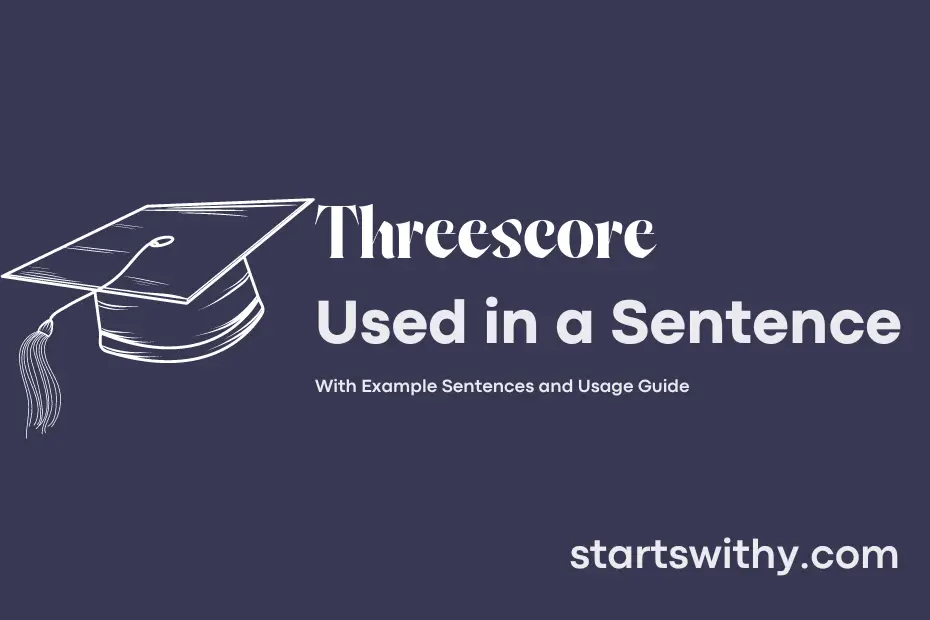Have you ever come across the term “threescore” in writing or conversation and wondered what it means? In simple terms, threescore refers to a number of sixty. This archaic term is often used in literature or older texts to indicate a specific quantity or age.
In biblical contexts, threescore is commonly found in passages referring to time periods or counting large numbers. Understanding the meaning of threescore can provide clarity when encountering this term in various literary works or historical documents.
7 Examples Of Threescore Used In a Sentence For Kids
- Threescore means sixty.
- A threescore is made up of three tens.
- A threescore has six groups of ten.
- If you have six tens, you have a threescore.
- Counting by tens, you can reach a threescore.
- When you have six tens, that’s a threescore.
- In a game, getting three tens twice gives you a threescore.
14 Sentences with Threescore Examples
- Threescore students attended the college festival last weekend.
- The professor gave a challenging assignment worth threescore marks.
- Only threescore students passed the difficult entrance exam.
- The library has a collection of books numbering threescore and more.
- The sports team won by a margin of threescore points.
- The cultural society organized a threescore hour drama marathon.
- The cafeteria served over threescore varieties of food during the college event.
- The career fair attracted threescore companies looking to hire students.
- The university hosted a threescore hour hackathon for tech enthusiasts.
- The debate team secured threescore awards at the intercollegiate competition.
- The music club performed a threescore minute concert on campus.
- The cricket team scored threescore runs in the final match.
- The film society screened over threescore movies during the film festival.
- The auditorium was filled with threescore spectators for the annual talent show.
How To Use Threescore in Sentences?
To use the word “Threescore” in a sentence, you must understand its meaning and how it is commonly used. Threescore is an old-fashioned term that is used to refer to the number sixty.
Here is an example sentence incorporating the word “Threescore”:
- She had lived for more than threescore years and had many stories to share.
When using the word “Threescore,” it is important to remember that it specifically refers to the number sixty. You can use it in a similar way to how you would use the number 60 in a sentence.
It can be helpful to provide context when using the word “Threescore” to ensure that your meaning is clear to your audience. This can be done by including additional information or details in the sentence.
As you become more comfortable with using the word “Threescore” in sentences, you may start to incorporate it into your everyday vocabulary. Just remember that it is a somewhat formal or archaic term, so be mindful of the context in which you use it.
By following these guidelines and practicing using the word “Threescore” in different sentences, you will become more confident in incorporating it into your writing and conversation.
Conclusion
In conclusion, sentences with the word “threescore” typically refer to the number sixty. This term is mainly used in formal or literary contexts to express quantities of sixty, such as “threescore years” for sixty years. It is an older term that is not commonly used in modern everyday language but can still be found in historical texts, religious scriptures, or poetic works.
Understanding the meaning of “threescore” in sentences allows for clearer interpretation of numerical values or time periods expressed in increments of sixty. While not widely used in contemporary speech, recognizing and interpreting this term can provide insight into historical or literary texts where it appears, aiding in a deeper comprehension of the content.



